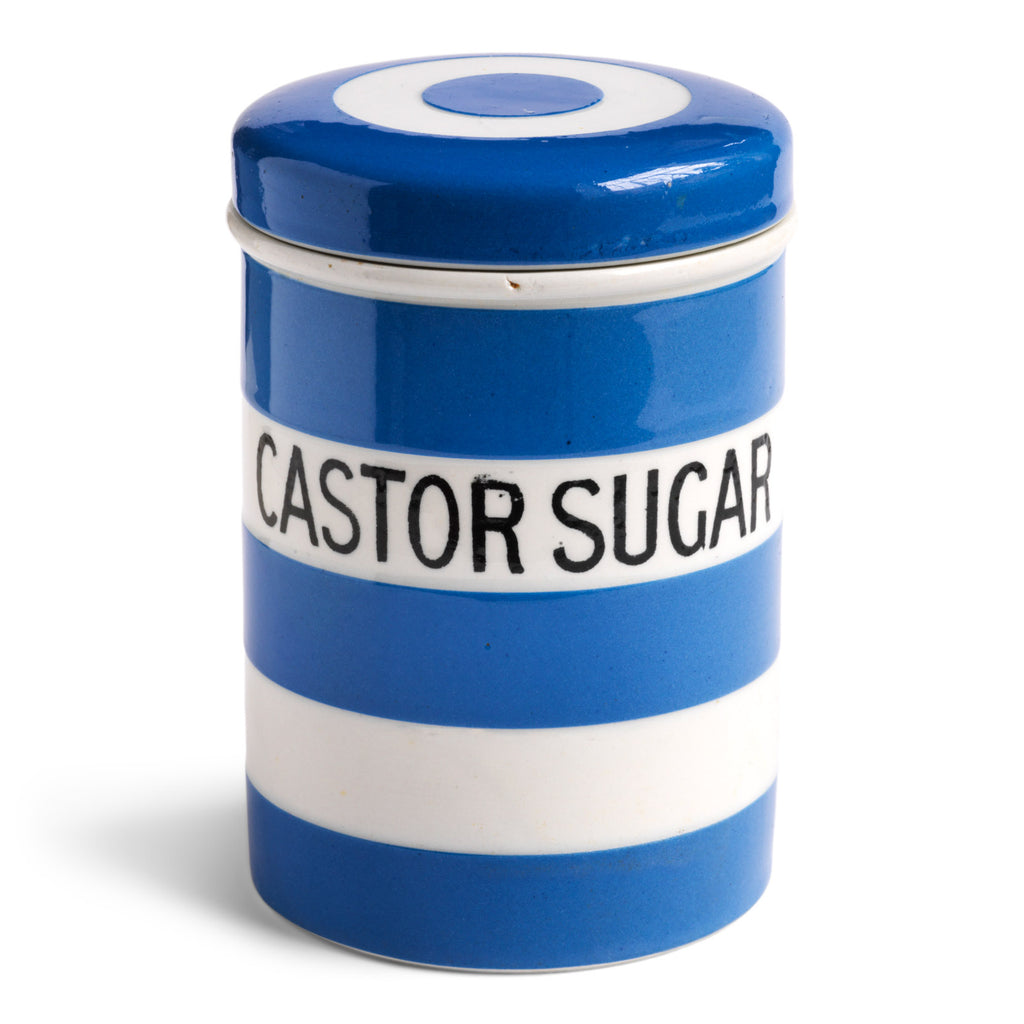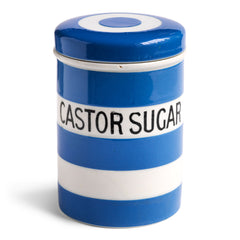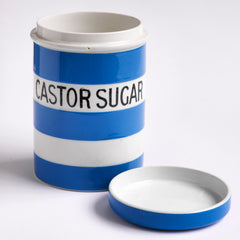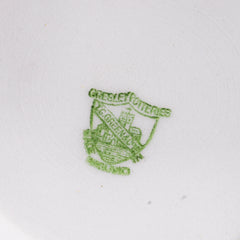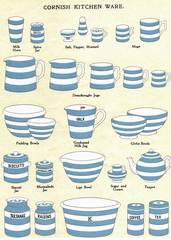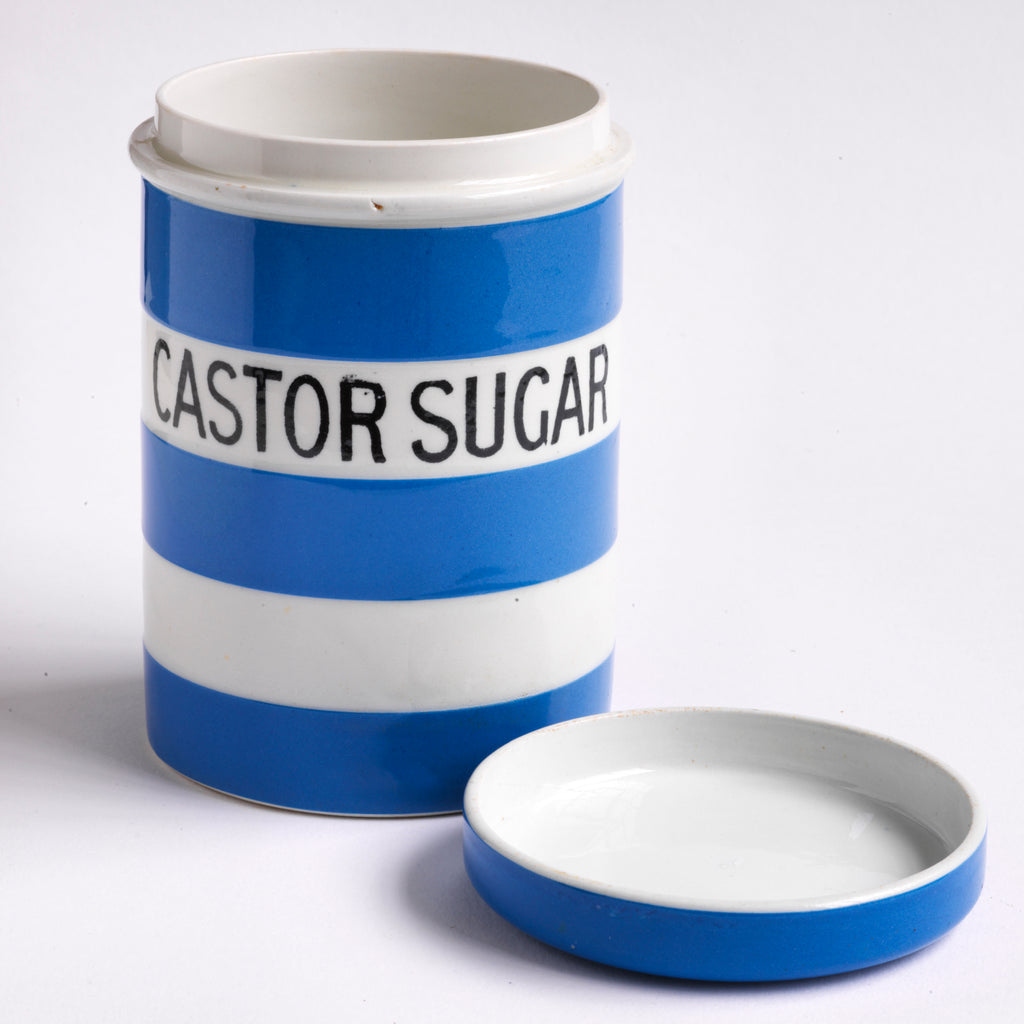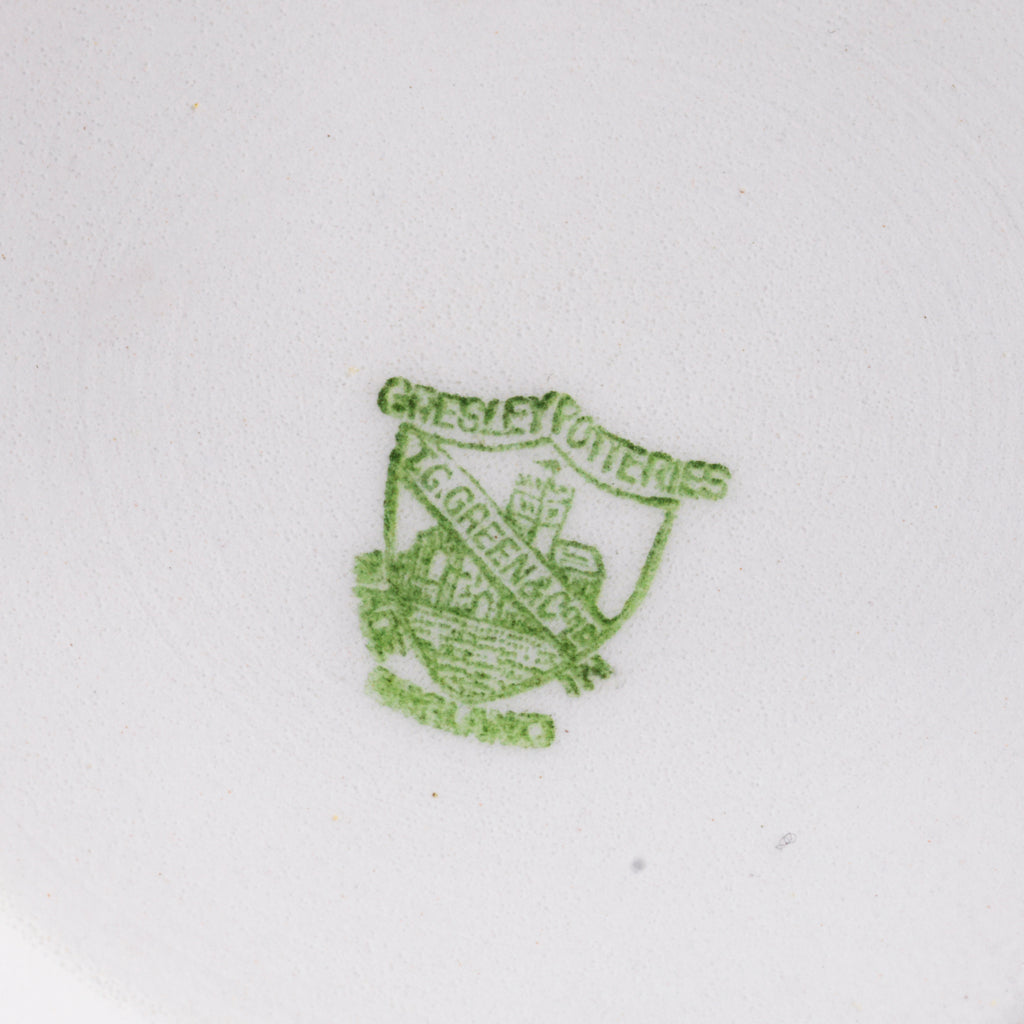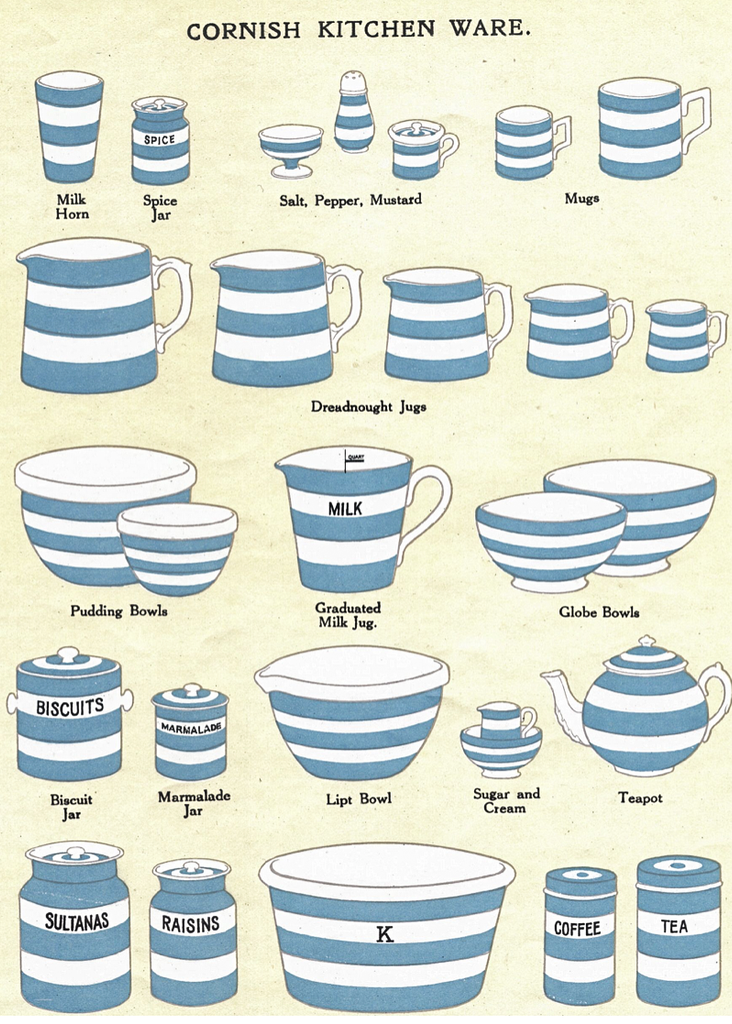VINTAGE
Rare T G Green Castor Sugar Caddy
£195.00
An early and rare T G Green Cornish Kitchenware castor sugar canister. The "Castor Sugar" typography is more utilitarian than normal, and the underside of the jar bears a rare "Gresley Potteries" shield stamp, which dates it to the time of the great crash of 1929. The crash prompted several potteries in the area to amalgamate for a very short time, and work was shared out to other smaller potteries to keep them afloat, thus the unusual branding of "Gresley Potteries" and the more humble typeface.
History
The blue and white striped Cornish Ware by T. G. Green is recognised as one of the most classic and enduring designs of twentieth century kitchen pottery. Established in 1864 by Thomas Goodwin Green, when he purchased the Derbyshire pottery of Church Gresley, T G Green potteries started out by manufacturing utilitarian kitchen and table-wares for local demand only.
The classic blue and white banded design was born as a result of the economic recession that followed the First World War. With factory workers in their white earthenware division down to a two-day week, further projects were urgently required. The result was Cornish Kitchenware, or Cornish Ware, as it became known.
The banded Cornish Ware was created by dipping the unfired pottery in blue slip and then turning each piece on a lathe to remove bands of the slip, revealing the white body underneath. A clear glaze followed to make them watertight and suitable for kitchen use. It was named after the Cornish clay that was used in the making of the first pieces, a set of E. Blue jugs in 1922. The clay was brought to Derbyshire, as it helped "stick" the blue slip, the range initially being called E. Blue - Electric Blue. The idea of blue and white stripes representing the Cornish seaside was only used in advertising from 1949, and is a purely romantic idea that it gave birth to the Cornish Ware name.
Year of manufacture: c.1929
Origin: England
Material: ceramic
Diameter 10cm Height 14.5cm
Condition: excellent, with the minutest fault in the glaze located at the top of the jar front (as shown in main image).





